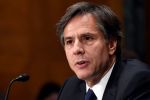Fitch: 2016 Outlook Largely Stable for U.S. Colleges & Universities
Fitch is projecting a stable outlook for U.S. colleges and universities, with affirmations likely to dominate rating actions. The primary credit drivers, namely student demand and enrollment, financial resources, and operating performance, remain in place. That said, 'small, tuition-dependent schools in demographically declining areas or highly competitive regions will experience greater pressure,' said Senior Director Joanne Ferrigan. 'Overall, the sector may become more bifurcated with stronger institutions maintaining their positions and the weaker losing ground.'
Demographic shifts in student demand will continue, with further declines in high school graduates anticipated. Given that these shifts were anticipated, institutions with proactive management ostensibly have had time to assess their competitive position and shape enrollment strategies. Macro issues like constrained family finances, job attainment post-graduation and student loan access are playing a more prominent role in affecting demand and will be closely watched. 'Highly tuition-dependent institutions will be negatively affected if tuition discounts and expenses are not prudently managed or pricing pressures lead to unmanageable enrollment declines,' said Ferrigan.
Liquidity improved for most Fitch-rated colleges and universities this year driven largely by positive investment performance which may partially mitigate demand and operating challenges. There is some risk that institutions heavily dependent on investment earnings to support operations could see negative rating actions if financial markets deteriorate and endowment spending rates become unsustainable. However, most institutions have multiyear spending policies that help smooth periodic market fluctuations.




Комментарии